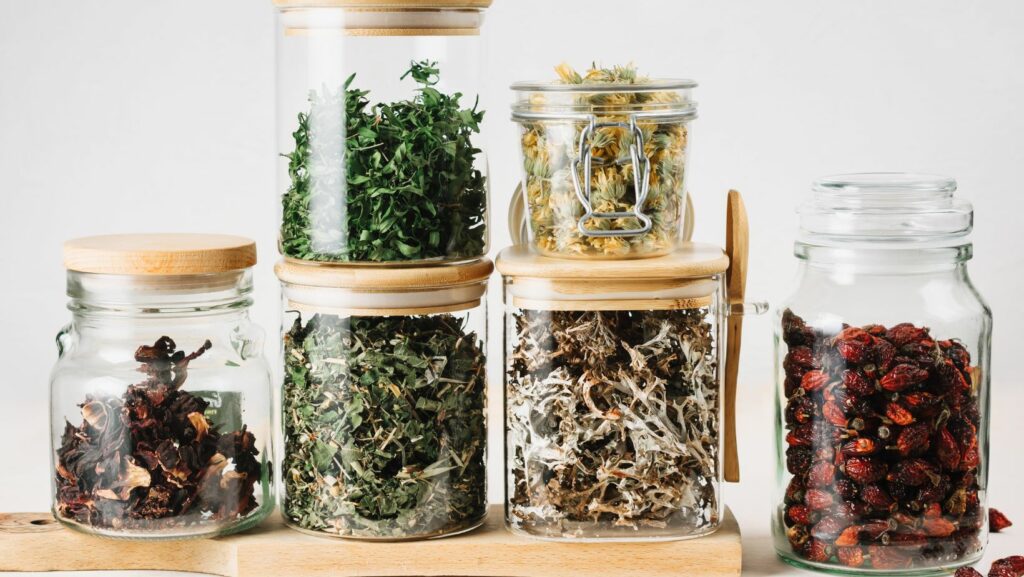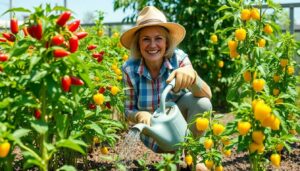Key Takeaways
- Holistic Health Approach: Herbalism emphasizes natural healing and considers physical, emotional, and spiritual aspects of health, making it a valuable alternative to conventional medicine.
- Diverse Herbal Applications: Familiarity with various forms of herbal remedies, such as teas, tinctures, and salves, assists individuals in selecting appropriate options for their health needs.
- Safety and Efficacy: Prioritizing research on herb safety and potential interactions is essential for effective outcomes when using herbal remedies.
- Essential Tools for Practice: Utilizing proper tools like mortar and pestle, measuring instruments, and storage containers enhances the preparation and application of herbal remedies.
- Personalized Herb Selection: Choosing herbs based on individual health goals and ensuring high quality contributes to optimizing therapeutic effects in herbalism.
- Knowledge is Key: Understanding specific herbs and their unique properties is paramount for successful herbal practice, allowing users to make informed wellness decisions.
Herbalism has captivated humanity for centuries, offering a natural approach to health and wellness. As people increasingly seek alternatives to conventional medicine, the interest in herbal remedies is on the rise. This guide dives into the world of herbalism, focusing on the specific benefits and applications of various herbs.
Understanding herbalism isn’t just about knowing which plants to use; it’s about appreciating the intricate relationship between nature and well-being. From soothing teas to potent tinctures, the potential of herbs is vast and varied. Whether someone is a seasoned herbalist or a curious beginner, this guide provides essential insights and practical tips to harness the power of herbal remedies effectively.
Herbalism Guide Sod
Herbalism, encompassing the study and use of plants for medicinal purposes, serves as a crucial element in holistic health. Understanding the properties of various herbs enables individuals to make informed choices about their wellness. This guide offers a comprehensive look at the fundamentals of herbalism, including safety, preparation methods, and efficacy.
Key Elements of Herbalism
- Safety Practices: Prioritizing safe usage ensures effective outcomes. Individuals must research and understand potential interactions and contraindications.
- Preparation Methods: Familiarity with different preparation methods, such as infusions, decoctions, tinctures, and salves, enhances the effectiveness of herbal applications.
- Efficacy: Studying the targeted benefits of specific herbs can guide individuals in selecting appropriate remedies. Many herbs possess unique properties that address various health concerns.
Applications of Herbalism
- Teas: Herbal teas, made from leaves, flowers, and roots, provide gentle support for hydration and wellness.
- Tinctures: Alcohol-based extracts of herbs offer concentrated benefits, allowing easy consumption and potency.
- Topical Treatments: Creams and oils derived from herbs provide localized relief for skin conditions, inflammation, and muscle aches.
- Capsules and Powders: Easily digestible forms ensure convenience and consistent dosages for herbal supplementation.
Through a structured approach, the Herbalism Guide Sod empowers both novice and seasoned herbalists to navigate the diverse potential of herbs in everyday health practices.
Key Principles of Herbalism
Herbalism relies on a deep understanding of plants and their medicinal properties. It incorporates various practices and principles to maximize the benefits of herbs.

Understanding Herbs and Their Uses
Herbalists study plants for their therapeutic properties and the roles they play in promoting health. Each herb contains unique compounds that provide specific benefits. For example:
- Chamomile: Known for its calming effects, it’s widely used to relieve anxiety and promote sleep.
- Peppermint: Offers digestive support and alleviates headaches.
- Echinacea: Utilized for its immune-boosting properties.
Comprehensive knowledge about herbs involves recognizing their forms—dried, fresh, tinctured, or as teas. Proper identification and preparation are crucial, as misidentification can lead to ineffective or harmful outcomes.
Benefits of Herbal Remedies
Herbal remedies provide numerous health advantages, often with fewer side effects compared to synthetic pharmaceuticals. Key benefits include:
- Natural Healing: Herbs promote the body’s innate ability to heal itself.
- Holistic Approach: Herbalism considers the whole person, addressing physical, emotional, and spiritual aspects.
- Customizability: Herbalists can tailor remedies to individual needs based on specific health conditions.
Evidence supports the efficacy of many herbs, making them valuable alternatives or complements to conventional medicine. Research indicates that regular use of herbal products can enhance immunity, reduce inflammation, and improve overall well-being.
Getting Started with Herbalism Guide Sod
This section outlines the foundational elements necessary for engaging with herbalism effectively. It includes the essential tools and techniques for utilizing herbs in various forms.
Essential Tools and Equipment
Herbalism requires specific tools and equipment to ensure successful preparation and application of herbal remedies. Key items include:
- Mortar and Pestle: Used for grinding herbs and creating fine powders for tinctures and capsules.
- Measuring Spoons and Scales: Essential for accurately measuring herb quantities, which optimizes dosages.
- Glass Jars and Bottles: Ideal for storing herbs, tinctures, and infused oils while preserving potency.
- Strainer or Cheesecloth: Necessary for filtering liquids from solid herbs in teas and tinctures.
- Double Boiler: Recommended for precise temperature control during salve and oil infusions.
Using these tools enhances both the safety and efficacy of herbal practices, leading to better outcomes.
Selecting the Right Herbs
Choosing appropriate herbs serves as a crucial component of successful herbalism. Factors to consider include:
- Purpose: Identify the specific health benefits desired, such as calming effects or digestive support.
- Quality: Select high-quality, organic herbs from reputable suppliers to ensure safety and potency.
- Research: Investigate the properties and potential interactions of selected herbs to prevent adverse effects.
- Personalization: Customize herb choices to fit individual health needs and preferences, enhancing therapeutic outcomes.
Incorporating these criteria leads to informed decisions when selecting herbs, optimizing their benefits in herbal practices.
Common Herbs and Their Applications
Herbs serve various purposes in herbalism, each with specific applications that contribute to health and wellness. Understanding these uses allows individuals to make informed decisions regarding herbal remedies.
Herbal Preparations and Remedies
Herbal preparations deliver therapeutic benefits in multiple forms, including:
- Teas: Infusions of dried herbs provide hydration and mild therapeutic effects. Examples include chamomile for relaxation and peppermint for digestion.
- Tinctures: Concentrated extracts made by soaking herbs in alcohol or vinegar, tinctures preserve the medicinal properties of the plants. Echinacea is commonly used in tincture form for immune support.
- Salves: Topical remedies created by blending herbs with oils and wax. These are effective for skin irritations and conditions, such as calendula for wound healing.
- Capsules and Powders: Convenient forms, these allow for easy consumption of powdered herbs, making them ideal for daily supplementation. Turmeric capsules support anti-inflammatory efforts.
Dosages and Safety Considerations
- Research: Investigating specific herbs ensures awareness of potential interactions with medications or conditions.
- Consultation: Seeking advice from healthcare professionals before starting herbal remedies aids in avoiding adverse effects.
- Dosage Guidelines: Following established dosage recommendations prevents overdosing. Herbs like ginseng should not exceed 2-3 grams per day to avoid side effects.
- Sensitivity Testing: Conducting patch tests with topical applications helps identify individual allergies or sensitivities to specific herbs.
Rich Tapestry of Knowledge And Practices
Herbalism offers a rich tapestry of knowledge and practices that connect individuals with the healing power of nature. By understanding the principles and applications of various herbs, one can enhance personal health and well-being.
The guide serves as a valuable resource for anyone interested in exploring herbal remedies, whether they’re seasoned practitioners or newcomers. With a focus on safety and effective preparation methods, it paves the way for informed choices in herbal practices.
Embracing herbalism not only promotes holistic health but also fosters a deeper appreciation for the natural world and its resources. As individuals embark on their herbal journey, they’ll discover the transformative potential of these remarkable plants.


